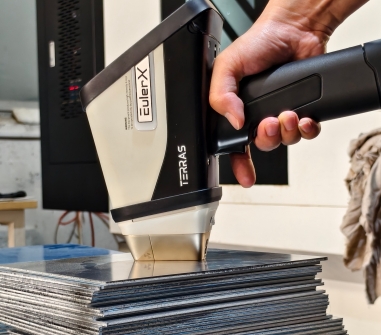
soil
A high-tech enterprise focusing on the development and application of X-ray technology products, committed to becoming a leading supplier of X-ray industrial testing solutions.
The Power of XRF Soil Testing: How It’s Revolutionizing Environmental Analysis
In today’s world, environmental concerns are at the forefront of scientific research and policy-making. From pollution to conservation efforts, understanding the quality and composition of soil has become more critical than ever. One of the groundbreaking techniques making waves in environmental analysis is X-Ray Fluorescence (XRF) soil testing.
What is XRF Soil Testing?
XRF is a non-destructive analytical technique used to identify the elemental composition of a sample. In soil testing, this method allows scientists and environmentalists to quickly and accurately detect a wide range of elements present in the soil. It works by bombarding the soil sample with high-energy X-rays, causing the atoms within the sample to emit fluorescent X-rays. These emissions are then analyzed to identify and quantify the elements present.

Why is XRF Soil Testing a Game Changer?
Speed and Efficiency
Traditional soil testing methods often require time-consuming sample preparation, chemical treatments, and laboratory analysis. XRF testing significantly reduces turnaround times. With just a small soil sample, results can be obtained in minutes, allowing for quicker decision-making in environmental monitoring, agriculture, and remediation projects.
Non-Destructive Analysis
Unlike conventional methods that may alter the soil sample, XRF testing is non-destructive. This means the same sample can be tested multiple times or retained for further analysis. This property is particularly valuable in long-term environmental monitoring where sample preservation is crucial.
Cost-Effective
XRF testing is generally more affordable compared to traditional soil analysis techniques. There is no need for expensive reagents or complex procedures, making it a cost-effective option for large-scale soil testing in agricultural fields, construction sites, or contaminated land areas.
Comprehensive Element Detection
XRF can detect a wide array of elements, from essential nutrients like nitrogen, phosphorus, and potassium to trace heavy metals such as lead, arsenic, and mercury. This makes XRF an excellent tool for environmental assessments, especially in detecting soil contamination and ensuring that soil health is within acceptable limits for plant growth or human activity.
Applications in Environmental Analysis
Soil Pollution and Remediation
Heavy metal contamination is a significant environmental issue, especially in industrial areas. XRF soil testing provides a rapid and precise way to identify areas of soil that are contaminated with hazardous materials. This is crucial in guiding remediation efforts to restore soil health and prevent further environmental damage.
Agricultural Monitoring
Farmers and agronomists are increasingly turning to XRF for soil analysis to optimize crop yield. By understanding the exact elemental composition of soil, XRF helps determine which nutrients are lacking or in excess, allowing for targeted fertilization. This not only enhances productivity but also promotes sustainable farming practices by minimizing overuse of fertilizers.
Urban Planning and Construction
In urban planning, XRF soil testing is used to evaluate the suitability of land for construction. Before building infrastructure, soil composition must be analyzed to ensure stability and safety. XRF testing helps identify any contaminants that might pose health risks or compromise the integrity of future construction projects.
Environmental Impact Assessments
Governments and organizations performing environmental impact assessments rely on XRF soil testing to evaluate the potential effects of development projects on local ecosystems. Whether for mining, land development, or waste disposal, XRF offers an efficient method for understanding the environmental risks involved.

Terras EulerX900 Handheld Soil Analyzer
The EulerX 600 Handheld Soil Analyzer is a vital tool for rapid on-site screening of soil, sediment, and environmental pollutants. It detects hazardous heavy metals in seconds, significantly reducing the need for lab samples—cutting analysis time and costs. Beyond soil testing, it is widely used in river slough pollution projects, environmental monitoring near contamination sources, landscaping, and geological surveys. It also efficiently screens heavy metals in dust, filters, film layers, lead paint, and air filters. By quickly identifying and mapping contaminated areas, the EulerX 600 helps minimize remediation expenses and optimize cleanup efforts.
Conclusion
The power of XRF soil testing lies in its ability to provide quick, accurate, and non-destructive insights into soil composition. By revolutionizing how we analyze and interpret soil data, it is transforming environmental analysis across numerous sectors, from agriculture to urban development.
Join Us
Subscribe to our email list for updates & promotions.



